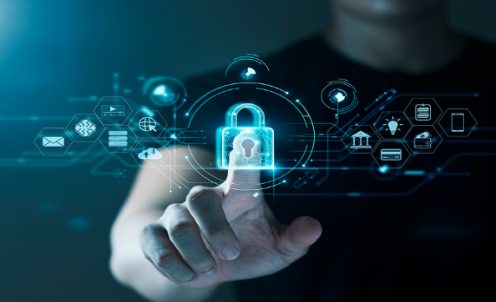
Sorry, your browser is not compatible with this application. Please use the latest version of Google Chrome, Mozilla Firefox, Microsoft Edge or Safari.
Balancing AI Policy and Innovation
As federal agencies have been experimenting with and implementing artificial intelligence (AI) solutions, they have been working to deliver on the requirements outlined in recent Executive Orders to ensure that the solutions meet standards for data security, governance, and proper risk management. These requirements were crafted to balance needed governance with the demand for innovation…
Recent Posts
DevSecOps for Government: Secure Innovation at Scale
Government agencies are modernizing how they build, test, and deploy software—with DevSecOps at the center of that transformation. The trend report DevSecOps for the Future of Government IT explores how public sector teams are embedding security into every stage of the development lifecycle while improving agility, compliance, and collaboration. PTaaS: From Annual Tests to Real-Time…
Learn more
The New Age of OSINT: Turning Open Data into Strategic Advantage
As global threats grow more dynamic and asymmetric, open-source intelligence (OSINT) is becoming a mission-critical tool for government agencies. The trend report From Open Sources to Strategic Advantage explores how OSINT is evolving from a supplemental resource into a primary asset for real-time threat detection, border security, and strategic decision-making. Modern Screening and Vetting Traditional…
Learn more
Protecting Kids with Technology and from Technology
Across the country, state and local agencies are rethinking how they protect children—both through technology and from it. Digital tools are helping caseworkers respond faster to abuse reports, coordinate across agencies, and keep kids safer in their communities. Yet those same agencies (and others) are facing a new kind of responsibility—safeguarding children from online dangers…
Learn more
Securing the Future of Learning: Education Market Trends
From K–12 districts to higher education institutions, schools across the country are facing mounting pressure to modernize—while defending against evolving cyber threats and navigating ongoing workforce shortages. The Education Market Trends Report, Securing the Future of Learning, highlights how IT leaders, administrators, and faculty are working together to protect and advance learning through smarter, more…
Learn more
5 Tips for Where to Publish White Papers
Content is king! This has long been a driving mantra for Business to Government (B2G) marketers and government agencies. As a result, communications and marketing teams have been busy creating insightful and helpful white papers, infographics, e-books, and more. But content success is not a field of dreams. If you build it, they will not…
Learn more
Transforming Work with AI: Human Capital’s Critical Role
As AI reshapes the modern workplace, human capital (HC) professionals are stepping into a dual role—as adopters and enablers of transformation. The new report, Transforming Work: A Human Capital Approach to AI Adoption, explores how HC leaders are redefining work, talent, and training through responsible AI integration. AI in Talent Acquisition Recruiting teams are leading…
Learn more
From Data to Decisions: How Agentic AI Is Transforming Government
The new trend report, From Data to Decisions: How Agentic AI Is Transforming Government, explores how a new class of artificial intelligence is reshaping the public sector. Agentic AI goes beyond traditional automation by planning, executing, and adapting on behalf of users—giving agencies the ability to modernize faster, operate more efficiently, and deliver more impactful…
Learn more
Building Our Autonomous Future: Robotics in Government
Autonomous technology is no longer a distant concept—it’s actively reshaping how government agencies operate, respond, and innovate. In the Building Our Autonomous Future trend report, public sector experts from Inspired Flight, Draganfly Innovations, WISPR Systems, and Zephyr Drone Simulator share how drones, robotics, and AI-powered systems are enabling smarter, safer, and faster missions across federal,…
Learn more
Tracking the Evolution of Key Security Programs
Each October, Cybersecurity Awareness Month serves to remind the general public of the role each person plays in securing the online systems we have all come to depend on. While cybersecurity is a year-round focus for government agencies, the last year has seen some significant updates to several key government cybersecurity programs. Common Vulnerabilities and…
Learn more
Subscribe

Sign up to receive the GovWhitePapers newsletter, featuring our freshest content relevant to discussions happening in the government community.
Sign Up








